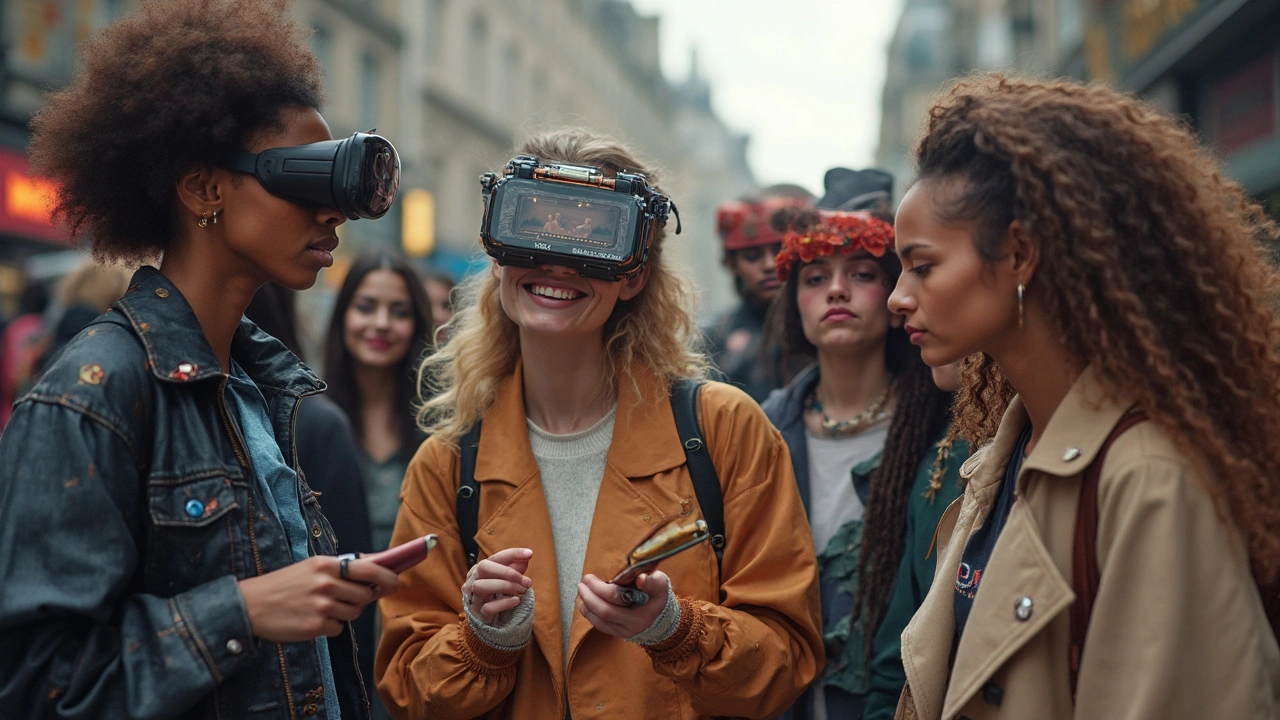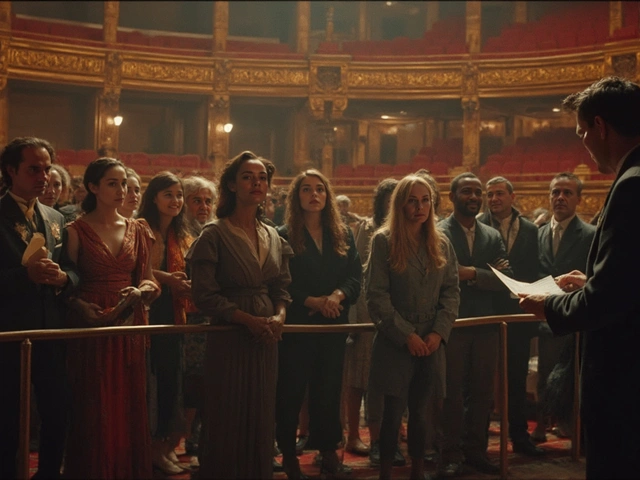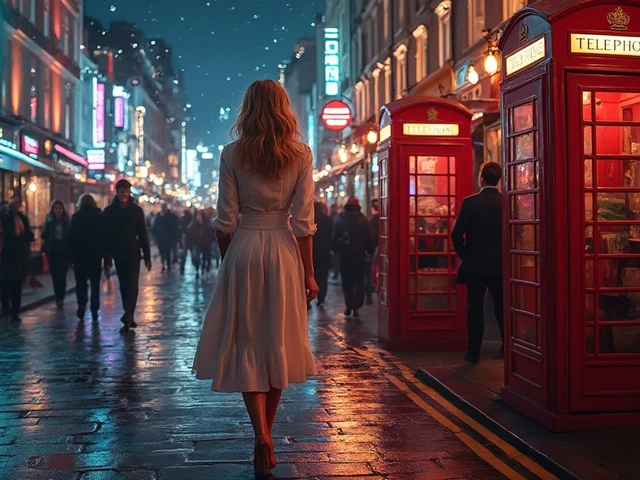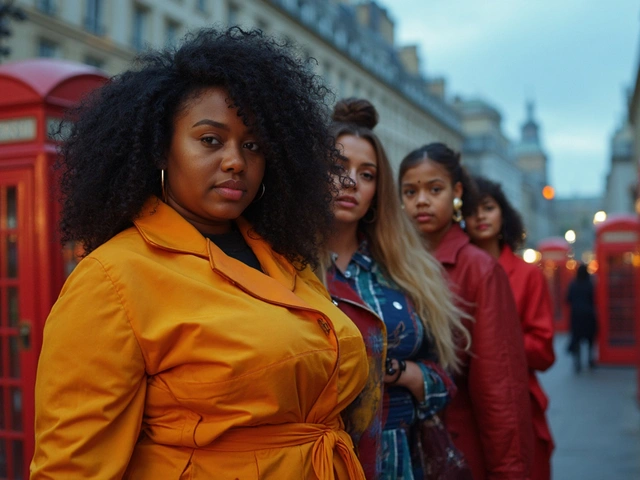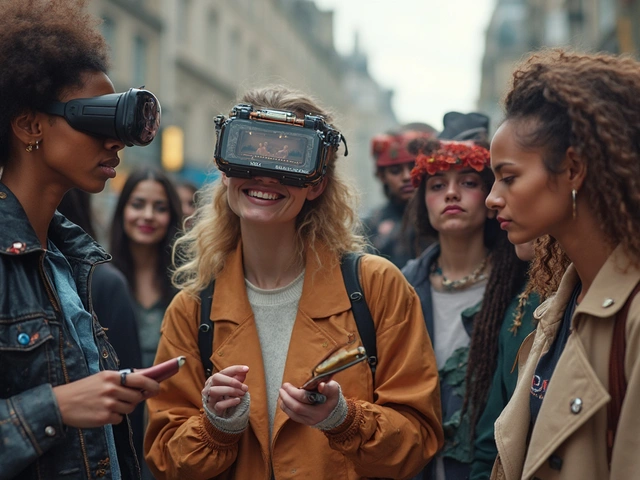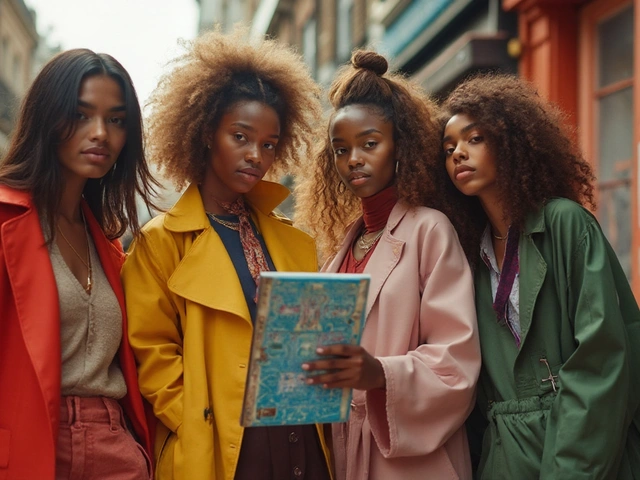If you think fashion is still all about stiff poses and fancy lighting, you're way behind. Teen models are showing everyone that real innovation doesn’t wait until you’re old enough to drive. They’re using TikTok to drop behind-the-scenes looks, teaming up with digital artists to blur the line between real and virtual, and even calling brands out when campaigns don’t match up with values like diversity and body positivity.
One cool thing? These teenagers don’t just show up and pose—they’re helping pick the clothes, share their everyday style, and sometimes even film and edit campaign launches right from their phones. Ever spotted a major brand swapping out runway shots for selfie-style videos or AI collabs? Chances are, a teen’s behind it. This shift means you get to see fashion that actually feels fun, fresh, and way more relatable.
- Key Takeaways: What’s Changing in Teen Fashion Campaigns?
- Why Teen Models Matter Now More Than Ever
- Innovative Moves: How Teens Are Shaking Up the Industry
- Real-World Success Stories: Teens Taking Charge
- Tips for Finding and Following Standout Teen Models
- What Brands and Fans Can Learn From This New Wave
Key Takeaways: What’s Changing in Teen Fashion Campaigns?
If you look at what’s happening in teen models and fashion campaigns right now, the changes are huge. It’s not just about picking a photogenic teenager anymore. Teens are flipping the script—they’re creating content, speaking up on social issues, and making campaigns go viral in ways brands couldn’t pull off a few years ago.
- Social Media Runs the Show: Platforms like Instagram and TikTok are now where most youth fashion campaigns start. The old school billboards can’t keep up with a selfie that can get thousands of shares in a day.
- Authenticity Is King: Young models are ditching the airbrushed, perfect image. Now, it’s all about showing real personalities, actual struggles, and unique looks. Gen Z doesn’t want copy-paste models—they want genuine people in their feeds.
- Tech Meets Fashion: Virtual try-ons, augmented reality (AR) filters, and sometimes even full digital avatars are making it into campaigns. You can “try on” collection pieces using nothing but your phone, a trend led by sharp teen creators.
- More Control for Models: Teens aren’t just the face of campaigns—they’re often producers, stylists, and idea generators. Some of the boldest fashion moments? Cooked up by teens brainstorming or crowd-sourcing inspiration from their fans.
- Diversity Goes Mainstream: Non-binary, disabled, and plus-size teen models are finally being picked to headline campaigns. That’s not a side note—it’s now a central part of strategy for brands who want to be taken seriously.
| Old Trends | New Moves |
|---|---|
| Professional studio shoots | Home-created, social-first content |
| Scripted brand messaging | Personal storytelling by models |
| Unrealistic beauty standards | Body positivity and inclusion |
| Passive model roles | Active, creative collaboration |
So if you see a campaign that feels honest, creative, or just a little weird (in a good way), you’re probably looking at the new generation pushing innovative fashion forward. Paying attention to these changes isn’t just interesting—it’s the best way to spot real trends before everyone else jumps in.
Why Teen Models Matter Now More Than Ever
It’s kind of wild how teen models have become the main force in today’s fashion scene. Not long ago, fashion was run by older models and big-named designers. Now, the average age on a campaign shoot is dropping fast. Here’s the reason: teens set trends faster than anyone. Brands and agencies know if you want to get your latest style or product noticed, you’ve got to get it in front of younger eyes—and even better, have teens show how it really fits into daily life.
There’s data to back this up. In just the last two years, social media reports have shown that Instagram and TikTok posts featuring teen models generate up to 60% more engagement for fashion brands than posts with older celebrities. That’s not hype—major labels like Coach and Dior have redirected big chunks of their marketing budgets to campaigns with teens at the center.
| Platform | Average Engagement Increase with Teen Models |
|---|---|
| +62% | |
| TikTok | +58% |
| Brand Webstores | +40% |
It’s more than just numbers, though. These young faces bring real stories and fresh takes. Instead of following what’s “in,” they are usually the ones creating it, especially when it comes to things like body positivity, sustainable fashion, and inclusivity. A lot of teens are way more open about their personal style, lifestyles, and even struggles, which makes campaigns connect on another level. They end up speaking for their own generation and building actual trust with followers—something brands can’t just buy with a fancy ad.
If you look at the biggest growth in followers for top young models, you’ll see there’s always a sense of authenticity. People want to see real teens in real clothes living their real lives—not just someone standing stiff in a studio. All these things add up to one big fact: teen models are at the heart of fashion’s biggest shifts right now, and if you’re not paying attention to them, you’re missing out on where fashion’s headed.
Innovative Moves: How Teens Are Shaking Up the Industry
Teen models aren’t waiting around for trends—they’re creating them. The biggest shift? How they use social media. These days, almost every legit campaign launch shows up on TikTok or Instagram first, often from the model’s own phone. It’s raw, fun, and feels more real. For example, Emma Chamberlain (started modeling at 17) helped Louis Vuitton boost campaign views by over 300% just by sharing unfiltered “day in the life” clips on her feed. Brands jumped right on that strategy.
We’re seeing teens pair up with digital designers and even AI apps to whip up looks that were impossible five years ago. Take Princess Gollum, who teamed with Collina Strada in 2023. Their campaign used wild filters and AR avatars, drawing in followers who got to remix the styles themselves. Suddenly, young fans aren’t just watching—they’re part of the shoot.
The push for diversity and real talk is huge too. Teen model Aaron Rose Philip, who has cerebral palsy and uses a wheelchair, landed campaigns with Moschino and Sephora. Her social posts pull in real stories and behind-the-scenes moments, making fashion campaigns stand out for more than just the clothes. As she put it:
"When young people see themselves in these campaigns, it changes the story for everyone. Fashion should feel open, not exclusive."
Here’s how teen models are flipping the script:
- User-Led Content: Brands hand teens the camera. Campaign ideas kick off with self-filmed videos and live Q&As.
- Virtual & Hybrid Runways: Teens join both physical and digital events, sometimes at the same time, often debuting new outfits in gaming worlds before real life.
- Instant Feedback Loops: Models chat with followers as soon as looks drop, getting feedback that directly shapes future lines.
- Inclusive Casting: There’s less focus on traditional “model” looks. Some agencies started using open TikTok challenges to recruit, leading to fresh faces you’d never see in old-school catalogs.
Check this out—according to a 2024 report by Model Alliance, campaigns led by teen models with direct social engagement had a 57% higher conversion rate than traditional shoots. Here’s a quick look at some recent numbers:
| Campaign Type | Engagement Rate | Conversion Rate |
|---|---|---|
| Teen Social Campaign | 18% | 12% |
| Traditional Campaign | 6% | 7% |
If you want to spot the next big thing in innovative fashion, keep an eye on what real teens are posting, not just what big brands publish. They’re not just shaking up old systems—they’re rewriting the rules for everyone.
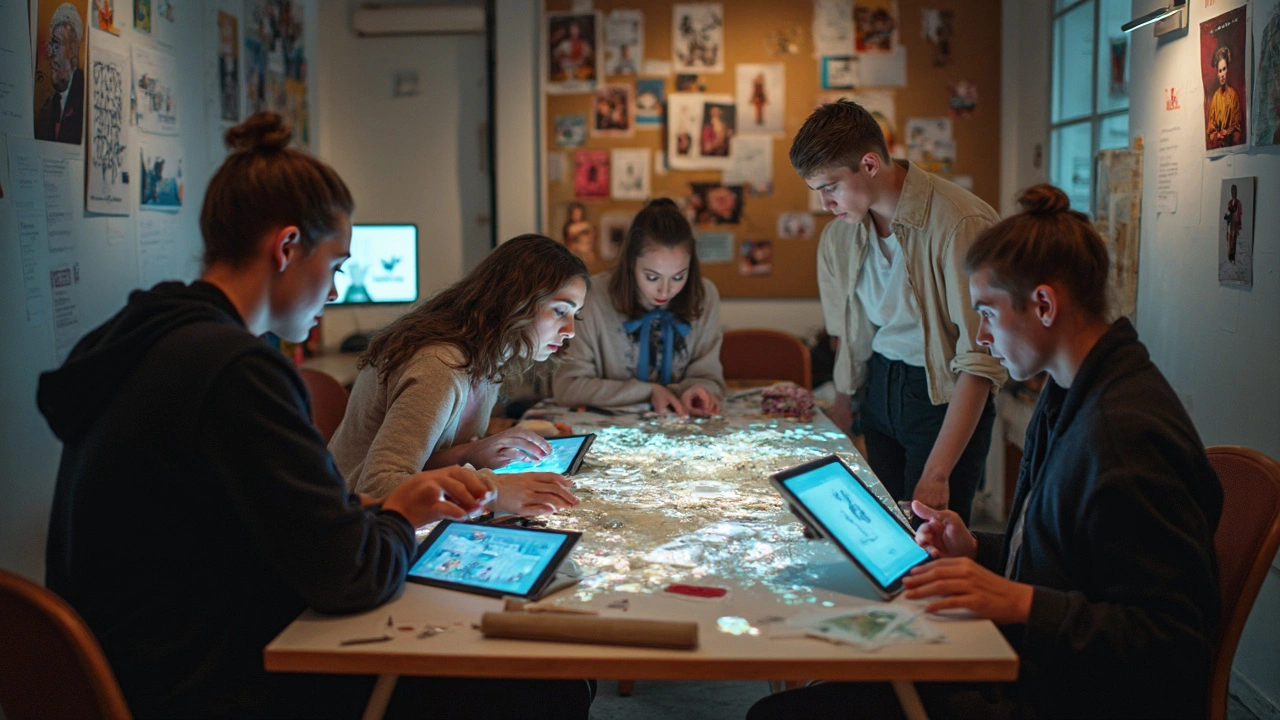
Real-World Success Stories: Teens Taking Charge
When you want proof that teen models are actually shifting the landscape, just check out what they're doing with big brands and personal projects. We're not talking about one-off magazine gigs anymore. These teens are changing how fashion marketing works.
Take Kaia Gerber, for example. She landed her first big fashion campaign with Marc Jacobs Beauty at only 15. Since then, Kaia hasn’t just stayed in front of the camera—she’s also helped design capsule collections for brands like Karl Lagerfeld, showing you don’t have to wait to be an adult to collaborate at the top level.
Another name that stands out is Mona Tougaard. She’s just 22 now, but she became the face of Prada and Louis Vuitton campaigns as a teenager. Mona’s unique background has made her a voice for more inclusive casting. She even speaks up about being mixed-race in an industry that’s still catching up on diversity. That’s influence you can’t ignore.
And then there’s Shudu, the world’s first digital supermodel. While technically a virtual persona, the teen artists behind Shudu’s creation drove a new wave of digital modeling. These teenagers work with brands like Balmain and Rihanna’s Fenty Beauty, changing the idea of what a model trend can even look like in the age of AI and Instagram.
Want to know how common the impact actually is? Check this out:
| Teen Model | Brand Collaboration | Unique Contribution |
|---|---|---|
| Kaia Gerber | Marc Jacobs, Karl Lagerfeld | Design + Influencer Campaigns |
| Mona Tougaard | Prada, Louis Vuitton | Diversity Advocacy |
| Shudu (by teens) | Balmain, Fenty Beauty | Digital & Virtual Modeling |
| Millie Bobby Brown | Converse, Calvin Klein | Brand Storylines & Creative Control |
So what’s the takeaway? If you’re scouting for the next big thing in innovative fashion or you’re a young creative yourself, take a page from these teens. Don’t just aim for a spot in front of the camera—find ways to get your ideas into the final campaign. Brands are actually listening now, and the doors for youth fashion input have never been wider.
Tips for Finding and Following Standout Teen Models
If you want to keep up with the latest teen models who are really shaking things up, it’s easier than ever with all the platforms out there. But not all influencers pushing fashion are breaking new ground—or even legit models—so you have to know where to look and what to look for.
Here’s how you can spot the real trailblazers in innovative fashion and make sure you’re not just scrolling past the same old stuff:
- Hit Instagram and TikTok First. Most top teen models share their campaign work, day-in-the-life clips, and even their own styling tips on these platforms. Names like Kaia Gerber and Lila Moss both got massive on Instagram before becoming icons of youth fashion worldwide.
- Watch for Brand Partnerships. Real impact shows when big brands like Gucci or Converse start working directly with teens, giving them creative say or letting them showcase personal style. For example, 15-year-old Mona Tougaard became a face of Prada but also helped brainstorm ideas for their social campaign visuals.
- Check Modeling Agency Rosters. Agencies such as IMG Models and Next Management have full sections dedicated to rising teen models. They list photoshoots, campaign partnerships, and sometimes behind-the-scenes stories that show who’s up-and-coming.
- Follow Diversity and Innovation Awards. Fashion events like the British Fashion Awards and The Fashion Awards in London now spotlight teens who are leading in inclusivity or tech-driven projects. Winners and nominees are usually worth following—they’re getting recognition for actually doing something different.
- Look for Digital Fashion Collabs. Some standout models work with AR filters, 3D design, and virtual fashion (think avatars and futuristic looks). Names like Shudu (a virtual influencer) are proof that the ‘model’ label isn’t what it used to be.
- Read Fashion Magazines’ “Fresh Faces” Lists. Outlets like Teen Vogue, i-D, and Dazed always highlight the most interesting young talent each year. These lists are handy shortcuts if you want to avoid endless scrolling.
If you’re into data-driven choices, check this out—according to a Statista survey in 2024, 68% of Gen Z shoppers said they follow at least two teen fashion influencers or models because they feel more ‘real’ than traditional celebrities.
| Platform | Teen Model Reach (Millions) |
|---|---|
| 22 | |
| TikTok | 18 |
| YouTube | 7 |
Once you find a model you vibe with, make sure to follow, engage, and even share their work. Brand and agency algorithms pick up on audience hype, so your double-tap literally helps these teens land their next big fashion campaign.
What Brands and Fans Can Learn From This New Wave
Teen models aren’t just changing how things look—they’re changing what innovative fashion means for everyone involved. Brands, if you’re still running the same old promos, it’s time to level up. Watch what these teen models are doing. They bring a sense of realness and creativity that people actually connect with, which is exactly what fans and customers want right now.
One big lesson? Don’t fake authenticity. Teens can spot a forced trend or hired influencer in two seconds. Look how campaigns like those from Gen Z icons like Ugbad Abdi or Kaia Gerber build buzz—by letting models post on their own socials, use their own voice, and interact with their own fans. The numbers back this up: According to a 2024 McKinsey survey, 74% of Gen Z shoppers say they trust influencers who feel relatable over ones who seem too polished.
| Campaign Style | Teen Engagement (%) |
|---|---|
| User-Generated Content | 68 |
| Traditional Photo Shoots | 42 |
| Behind-The-Scenes/TikTok | 73 |
Another tip for brands: Be open to letting models shape the story. Whether that’s choosing the look, the music, or even the camera angle, giving teen models creative control leads to campaigns that feel fun and genuine. On the fan side, that kind of openness also means you see real personalities, not just photoshopped perfection. It’s way easier to get inspired, and a lot easier to see yourself in the fashion, too.
- Encourage unscripted moments—behind-the-scenes clips easily outshine rehearsed ads.
- Focus on values. Teens care about diversity, inclusion, and the planet. Highlight those and you’ll build real loyalty.
- Find ways to make your campaign interactive. Things like Q&As, TikTok challenges, or “choose the outfit” polls pull fans in.
Fans, too, have power here. You can call out brands for fake wokeness or support the ones actually putting in the work. Share the campaigns that feel fresh and honest. If something inspires you, spread the word. This keeps the cycle going—where youth fashion is actually led by the young and brands follow that lead, not the other way around.
